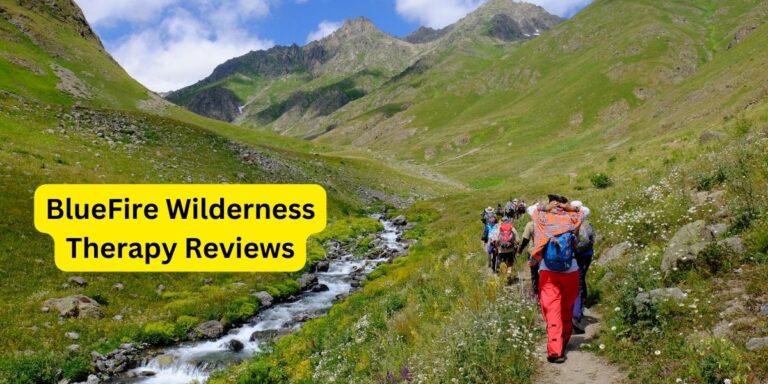Examining BlueFire Wilderness Therapy An Unusual Healing Method
For clients aged 11–17 and 18–28, BlueFire Wilderness Therapy treatment offers an outdoor-based wilderness and adventure treatment program. BlueFire integrates outdoor activities with clinical therapy to support personal development, enhance mental health, and assist participants build coping mechanisms. This article explores the many facets of BlueFire Wilderness Therapy, including its benefits, techniques, and the special approach it provides to its clients.
BlueFire Wilderness Therapy: What Is It?
A therapeutic program called BlueFire Wilderness Therapy immerses patients in the natural world, removing them from their typical surroundings. With a blend of professional therapy and outdoor adventure activities, the program is intended to assist people in addressing emotional challenges, behavioral disorders, and mental health concerns. This strategy makes use of the therapeutic properties of nature and the advantages of exercise to support personal growth and self-discovery.
The intended viewership
The two primary age groups served by BlueFire Wilderness Therapy are young adults (ages 18–28) and adolescents (years 11–17). Age-appropriate exercises and therapy interventions tailored to each group’s unique developmental needs are conducted. The program offers a controlled setting where individuals can overcome personal obstacles, grow in social skills, and establish trust.
The Healing Method
Clinical Interventions
A strong focus on clinical therapy is the foundation of BlueFire Wilderness Therapy. Individualized therapy programs are developed by licensed therapists in close collaboration with participants. These plans frequently involve family therapy, group treatment, and individual therapy sessions. Offering a thorough therapeutic experience that takes into account each participant’s particular needs is the aim.
Adventure Rehab
An essential element of the BlueFire curriculum is adventure therapy. Participants take part in a range of outdoor pursuits, including camping, rock climbing, and hiking. These exercises are meant to test participants’ physical and mental limits while fostering resilience, problem-solving abilities, and a sense of achievement. Adventure and therapy together create a potent setting for human development.
Advantages of Using Wilderness Therapy
Enhanced Mental Well-Being
It has been demonstrated that wilderness treatment improves mental wellness. Stress and anxiety can be lessened by being in the natural world, which offers a soothing backdrop. Endorphins are released during the physical activities of wilderness treatment, and these hormones have the potential to enhance mood and general well-being.
Growth of Coping Capabilities
BlueFire Wilderness Therapy participants acquire useful coping mechanisms that they can use in their daily lives. Among these abilities are efficient communication, emotional control, and stress management. Through the use of these abilities in a nurturing setting, participants develop self-assurance in their capacity to manage obstacles in life.
Increased Self-Respect
Participant self-esteem might increase when difficult outdoor activities are completed successfully. Many participants come to the program with feelings of helplessness or inadequacy. Their self-perception improves as a result of their achievements in the wilderness. Their newly discovered self-assurance will benefit them in other spheres of their existence.
The Significance of Family Engagement
An essential component of BlueFire Wilderness Therapy is family involvement. To assist participants and their families in addressing underlying issues and fostering better connections, the program includes family therapy sessions. It is suggested for family members to actively engage in the treatment process as this helps strengthen family ties and improve the participant’s support networks.
Achievements
Numerous people have benefited from BlueFire Wilderness Therapy’s ability to help them overcome obstacles and achieve personal growth. Success tales frequently show individuals’ behavior, attitudes, and general mental health changing dramatically. The program has a good impact on the lives of many past participants and their families, who speak well of it.
Remarks and Difficulties
BlueFire Wilderness Therapy has been praised for its novel approach, yet it has also encountered difficulties and criticism. Some detractors claim that the forest location might be overpowering and that the program is too demanding for some people. Some people have expressed worries about the program’s accessibility and expense. In spite of these obstacles, BlueFire keeps refining and enhancing its processes to better assist its users.
Conclusion
BlueFire Wilderness Therapy provides teenagers and young adults with a special and successful method of healing. The program enhances mental health, fosters self-esteem, and helps participants acquire critical coping skills by fusing clinical therapy with outdoor experiences. Despite occasional drawbacks, BlueFire Wilderness Therapy has a largely favorable overall impact and offers participants a life-changing experience. While mental health remains a major concern, initiatives such as BlueFire provide beneficial options for individuals looking for support and personal development.

